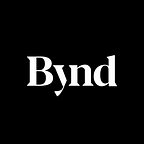LinkedIn photos may bias hiring processes, so we got rid of them–and you should too
By Nick Manluccia, Associate Director, Insights at Beyond
I’m proud to work for a design company that’s actively invested in fostering diversity and inclusion. It’s a digital agency that is trying — really trying — to be a leader in the space. We’ve had some obvious wins, some well-intentioned misses, and just about everything in between.
One of our clear, recent successes was organically creating a free digital product called antibias, a Google Chrome extension that fights bias in hiring and recruiting by anonymizing the photos in LinkedIn profiles.
So how did this come about?
As any Human Resources leader can attest, creating a diverse and inclusive workplace is not easy. But what if company leadership doesn’t have to shoulder the burden on its own? What if we put less emphasis on setting quotas and launching large-scale initiatives, and focused more on creating the right conditions for employees to foster diversity and inclusion on their own?
A recent case in point: my colleagues and I completed a standard training on implicit bias — we examined the nature of bias, its psychological origins, and the often insidious effects. Then we completed a series of exercises, the last of which involved breaking into small groups and developing a list of personal de-biasing strategies.
One of my colleagues mentioned that he refrains from looking an applicant’s LinkedIn profile until deciding whether or not to advance them in the hiring process — profile pictures could introduce bias into the decision. A good practice, but admittedly inconvenient: LinkedIn profiles are often a nice supplement to a resume, and if you’re scouting candidates who haven’t officially applied, seeing their picture on LinkedIn is all but unavoidable.
Then a lightbulb went off in our group: why doesn’t LinkedIn have a feature that allows you to temporarily remove photos when you’re vetting candidates? It could be a simple toggle. We got excited: “We should suggest this to LinkedIn! It could really help level the playing field for applicants.”
Another colleague overheard, and casually mentioned that he might be able to build a Google Chrome extension that would do exactly that.
Exactly 63 minutes later, I saw a .crx file (a Chrome extension) appear on Slack.
In just over an hour, he had built a fully functional prototype that removes profile pictures from LinkedIn, and could even hide users’ names. We were amazed: if we could get the rest of our recruiters and hiring managers to adopt the extension, it would be a massive step toward screening candidates as they should be: based purely on their credentials and achievements.
We spent a couple of days refining the product and developing a brand. We pitched it to our leadership team, and shared with everyone who plays a role in recruiting.
In three months, we’re going to run an analysis on the diversity of applicants who advanced in our hiring process, before and after the introduction of antibias. I’m eager to see how the figures compare, and would be amazed if we don’t see a shift in the upper portion of our hiring funnel.
Granted, our pursuit of diversity and inclusion will always be imperfect and incomplete. antibias is not going to totally eliminate bias in hiring decisions: it’s a modest effort that addresses a narrow portion of the problem.
But it shows how creative and unexpected ways to foster diversity and inclusion can emerge organically, from anywhere within an organization. It’s a reminder that there is no silver bullet, and that small, conscious steps can yield substantial progress. If even ten recruiters or hiring managers download antibias — and each of them review a hundred LinkedIn profiles this week — then we’ll have helped level the playing field for a thousand job applicants.
We’ll continue experimenting with different ways to fight workplace bias, and we’re inviting the broader business community to do the same. We’ve made the antibias extension available here for free. If you’re involved in the hiring process in any capacity, we encourage you to use it, and to share it with others in your organization.
